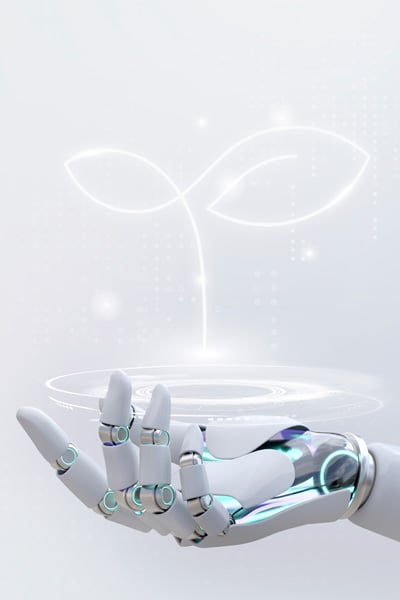CCTV Camera Technology In an era driven by technological innovation, it’s no surprise that even the most fundamental security tools like Closed-Circuit Television (CCTV) cameras are constantly evolving. These cameras have come a long way from their analog origins, and the latest advancements in CCTV camera technology are transforming the way we approach security and surveillance. In this article, we’ll dive into some of the exciting new features that are shaping the future of CCTV cameras.

High-Resolution 4K and Beyond:
One of the most significant advancements in CCTV cameras is the adoption of higher resolutions. Traditional CCTV cameras often offered low-quality footage, making it challenging to identify individuals or details in the video. The introduction of 4K resolution and even higher resolutions has revolutionized the clarity of video footage. With these cameras, you can capture crisp, detailed images, making it easier to recognize faces and read license plates, even from a distance.
Artificial Intelligence (AI) Integration:
Artificial intelligence is playing a pivotal role in CCTV camera technology. AI-powered cameras are equipped with features like facial recognition, object detection, and motion tracking. These capabilities allow CCTV systems to automatically identify and alert you to suspicious activities, improving overall security and reducing false alarms. AI integration also enables smart search functions, making it quicker and more efficient to locate specific events or objects within recorded footage.

Enhanced Low-Light and Night Vision:
CCTV cameras have made significant strides in low-light and night vision technology. The latest cameras are equipped with infrared (IR) LEDs and advanced image sensors that provide clear and detailed images even in complete darkness. This feature is particularly important for outdoor surveillance and monitoring poorly lit areas, making it possible to maintain surveillance 24/7.
Wide Dynamic Range (WDR):
WDR technology is designed to balance the exposure in challenging lighting conditions. It helps prevent overexposure in bright areas and underexposure in dark areas of the frame. With WDR-enabled CCTV cameras, you can capture high-quality footage in environments with stark contrasts between light and shadow, such as entrances with bright sunlight and dim interiors.
Remote Access and Cloud Storage:
Modern CCTV cameras offer convenient remote access through smartphones, tablets, or computers. This means you can monitor your property from anywhere with an internet connection. Additionally, many cameras now offer cloud storage options, eliminating the need for on-site recording devices and providing secure access to your video footage from anywhere, anytime.
Two-Way Audio:
Two-way audio capabilities allow you to not only see but also communicate with individuals on the other side of the camera. This feature is valuable for both security and communication purposes. You can use it to deter intruders or have a conversation with someone at your doorstep, enhancing the overall utility of your CCTV system.
Pan-Tilt-Zoom (PTZ) Functionality:
Many modern CCTV cameras come with PTZ capabilities, allowing you to remotely control the camera’s pan, tilt, and zoom functions. This versatility enables you to change the camera’s viewing angle and focus on specific areas of interest, providing comprehensive coverage without the need for multiple static cameras.

Mobile Alerts and Notifications:
CCTV cameras with mobile alert and notification features keep you informed in real-time. When unusual activity is detected, such as motion in restricted areas, these cameras can send alerts to your mobile device. This immediate notification empowers you to take action promptly, whether it’s contacting authorities or checking on your property remotely.
Privacy Features and Compliance:
As concerns about privacy and data protection grow, some CCTV cameras offer features to address these issues. Privacy masking allows you to define areas within the camera’s view that should be excluded from recording or live streaming. Additionally, compliance with data protection regulations, such as GDPR, is becoming more important, and some CCTV systems are designed with these regulations in mind to ensure lawful and responsible use of surveillance footage.
Conclusion: CCTV Camera Technology
CCTV Camera Technology The world of CCTV cameras is evolving at a rapid pace, with new features and technologies continually emerging. From high-resolution 4K video and AI integration to enhanced low-light capabilities and cloud storage, these advancements are making surveillance more accessible, efficient, and effective than ever before. As technology continues to advance, we can expect even more innovative features to reshape the landscape of CCTV camera technology and help keep our homes and businesses safe. Whether you’re considering upgrading your existing system or investing in a new one, staying informed about these developments will help you make the best choice for your security needs.
FAQs
1. What is a CCTV camera, and how does it work?
Ans. A CCTV camera, or Closed-Circuit Television camera, is a surveillance device used to capture video footage of an area or premises.
2. What are the key benefits of using CCTV cameras?
Ans. CCTV cameras offer several advantages, including:Deterrence of crime and vandalism.
3. What are the different types of CCTV cameras available?
Ans. There are various types of CCTV cameras, including dome cameras, bullet cameras, PTZ cameras (Pan-Tilt-Zoom), box cameras, and hidden or covert cameras.
4. How does AI integration benefit CCTV systems?
Ans. AI integration in CCTV cameras enables features like facial recognition, object detection, and motion tracking.
Hindi News Guru :- https://hindinewsguru.com/










